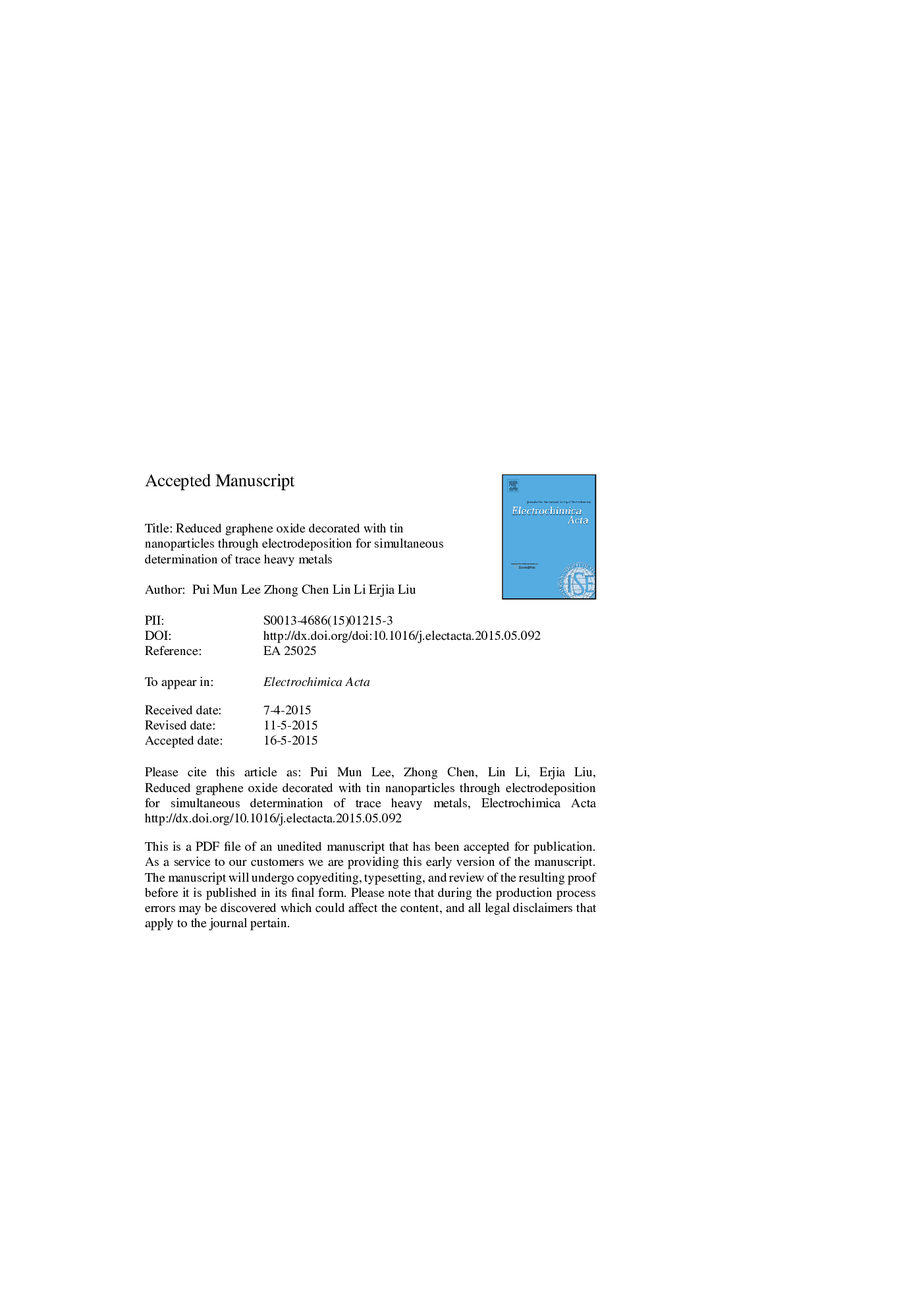| Article ID | Journal | Published Year | Pages | File Type |
|---|---|---|---|---|
| 6611094 | Electrochimica Acta | 2015 | 37 Pages |
Abstract
Reduced graphene oxide (RGO) decorated with tin nanoparticles (SnNPs) was electrodeposited on glassy carbon sheet (GCS), i.e. G-Sn/GCS, with a drop-casting method followed by constant potential electroreduction. Raman spectroscopic analysis on the graphitic structure of the G-Sn/GCS confirmed a good intercalation of SnNPs in the RGO matrix. Field emission scanning electron microscopic measurements illustrated a uniform distribution of the SnNPs on the RGO sheets. The G-Sn/GCS showed a better electroanalytical performance than the bare GCS and RGO/GCS in the simultaneous determination of divalent cadmium ions (Cd2+), lead ions (Pb2+) and copper ions (Cu2+) using square wave anodic stripping voltammetry. The electroanalytical measurements using the G-Sn/GCS were optimized at â1Â V for 150Â s in a 0.1Â M acetate buffer solution (pH 5). The G-Sn/GCS demonstrated a highly linear behavior in the detection of Cd2+, Pb2+ and Cu2+ in the concentration range of 10Â nM to 100Â nM with detection limits of 0.63Â nM, 0.60Â nM and 0.52Â nM (S/N=3), respectively. A mechanism for the formation of the G-Sn nanocomposite was proposed in this paper.
Related Topics
Physical Sciences and Engineering
Chemical Engineering
Chemical Engineering (General)
Authors
Pui Mun Lee, Zhong Chen, Lin Li, Erjia Liu,
